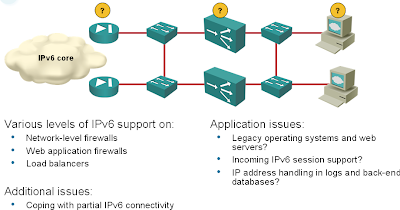Minor Bgp Routing Protocol Usage Requires A License

BGP Overview, History, Standards and Versions. Border Gateway Protocol. Any modification of the protocol would require the coordination of many different. Gossamer Mailing List Archive. Minor alarm set, BGP Routing Protocol usage. 2009-09-03 06:00:11 UTC Minor BGP Routing Protocol usage requires a license.
Routing Protocols NOTE: Routing Protocols require a feature license or ECM. Go to System Settings → Feature Licenses to view these features. A routing protocol is a protocol that specifies how routers communicate with each other, disseminating information that enables them to select routes between any two nodes on a computer network. Routing algorithms choose the route. Each router has a prior knowledge only of networks attached to it directly. A routing protocol shares this information first among immediate neighbors, and then throughout the network. This way, routers gain knowledge of the topology of the network.
Choose from the following tabs to configure routing protocols: • BGP Routing • OSPF Routing • RIP Routing • RIPNG Routing • Route Maps and Filters BGP Routing The latest version of BGP (Border Gateway Protocol) is version 4. BGP-4 is one of the Exterior Gateway Protocols and de facto standard of Inter Domain routing protocol. BGP-4 is described in RFC1771, A Border Gateway Protocol 4 (BGP-4). BGP is a distance vector routing protocol, and the AS-Path framework provides distance vector metric and loop detection to BGP. BGP Editor • Name: Unique name of the policy. • ASN: The AS (Autonomous System) number is one of the essential elements of BGP.
• Router-ID: This sets the router-ID of the BGP process. The router-ID may be an IP address of the router, but need not be – it can be any arbitrary 32-bit number. However it MUST be unique within the entire BGP domain to the BGP speaker: bad things will happen if multiple BGP speakers are configured with the same router-ID. • Enabled: Click to enable/disable the policy. (Default: enabled.) Networks Associated with ASN or IPv6 Networks Associated with ASN: To configure a BGP router, you need an AS number.
An AS number is an identification of autonomous system. BGP protocol uses the AS number for detecting whether the BGP connection is internal one or external one. Use the IPv4 address and netmask or IPv6 address with a prefix length to define the address range. Neighbor Options or IPv6 Neighbor Options: Creates a new neighbor identified by remote ASN and IP address. Redistribute Routes: Redistribute routes of the specified protocol or kind into BGP, with the metric type and metric set if specified, filtering the routes using the given route map if specified. Redistributed routes may also be filtered with distribute lists. • Type: The type is the source of the route.
Select from: Main, Connected, Static, RIP, and OSPF. • Metric: Numerical priority of the route.
• Route Map: Route maps provide a means to filter and/or apply actions to routes, allowing policies to be applied to routes. OSPF Routing OSPF (Open Shortest Path First) version 2 is a routing protocol described in RFC2328, OSPF Version 2. Vag 3.11 Keygen Generator on this page. OSPF is an IGP (Interior Gateway Protocol). Compared with RIP, OSPF can provide more scalable network support and faster convergence times.
OSPF is widely used in large networks such as ISP (Internet Service Provider) backbone and enterprise networks. OSPF Areas • Area: Areas are identified by an ID. • Default Cost: Set the cost of default-summary LSAs announced to stubby areas. • Stub Area: Configure area to be stub area. • No-Summary: Prevents ABR from injecting inter-area summaries into the specified stub area OSPF Editor • Router ID: This sets the router-ID of the OSPF process. The router-ID may be an IP address of the router, but need not be – it can be any arbitrary 32-bit number. However it MUST be unique within the entire OSPF domain to the OSPF speaker – bad things will happen if multiple OSPF speakers are configured with the same router-ID.
• Authentication Key: Set OSPF authentication key to a simple password. After setting authentication key, all OSPF packets are authenticated. The authentication key has a maximum length of eight characters.
• Enabled: Click to enable/disable the policy. (Default: enabled.) Network Areas: Areas are identified by an ID number. Use the IP address and netmask fields to associate a network with this policy. Redistribute Routes: Redistribute routes of the specified protocol or kind into BGP, with the metric type and metric set (if specified), filtering the routes using the given route map (if specified). Flashtool 0 9 10 0 Windows 7.